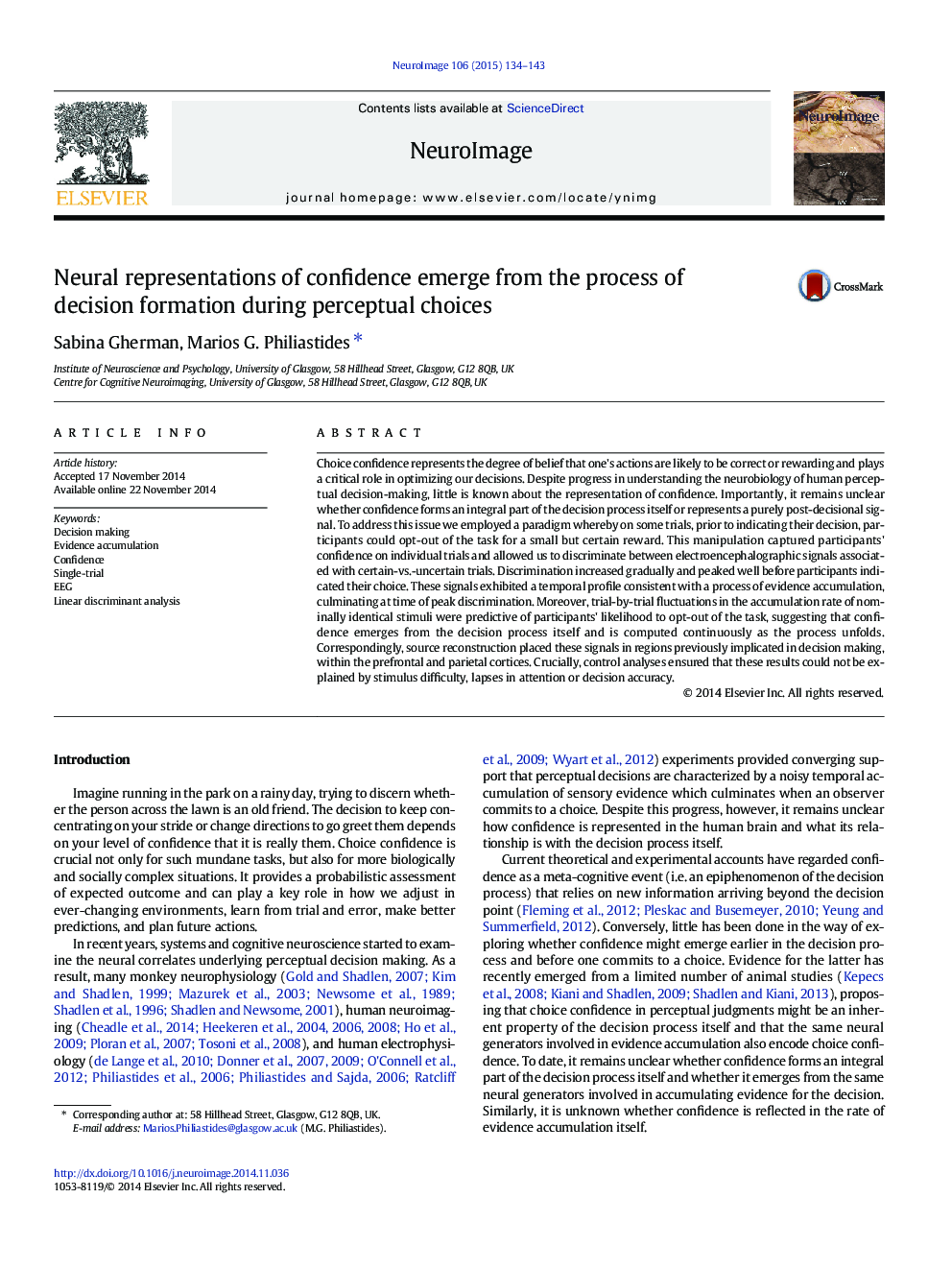| Article ID | Journal | Published Year | Pages | File Type |
|---|---|---|---|---|
| 6026543 | NeuroImage | 2015 | 10 Pages |
Abstract
Choice confidence represents the degree of belief that one's actions are likely to be correct or rewarding and plays a critical role in optimizing our decisions. Despite progress in understanding the neurobiology of human perceptual decision-making, little is known about the representation of confidence. Importantly, it remains unclear whether confidence forms an integral part of the decision process itself or represents a purely post-decisional signal. To address this issue we employed a paradigm whereby on some trials, prior to indicating their decision, participants could opt-out of the task for a small but certain reward. This manipulation captured participants' confidence on individual trials and allowed us to discriminate between electroencephalographic signals associated with certain-vs.-uncertain trials. Discrimination increased gradually and peaked well before participants indicated their choice. These signals exhibited a temporal profile consistent with a process of evidence accumulation, culminating at time of peak discrimination. Moreover, trial-by-trial fluctuations in the accumulation rate of nominally identical stimuli were predictive of participants' likelihood to opt-out of the task, suggesting that confidence emerges from the decision process itself and is computed continuously as the process unfolds. Correspondingly, source reconstruction placed these signals in regions previously implicated in decision making, within the prefrontal and parietal cortices. Crucially, control analyses ensured that these results could not be explained by stimulus difficulty, lapses in attention or decision accuracy.
Related Topics
Life Sciences
Neuroscience
Cognitive Neuroscience
Authors
Sabina Gherman, Marios G. Philiastides,
